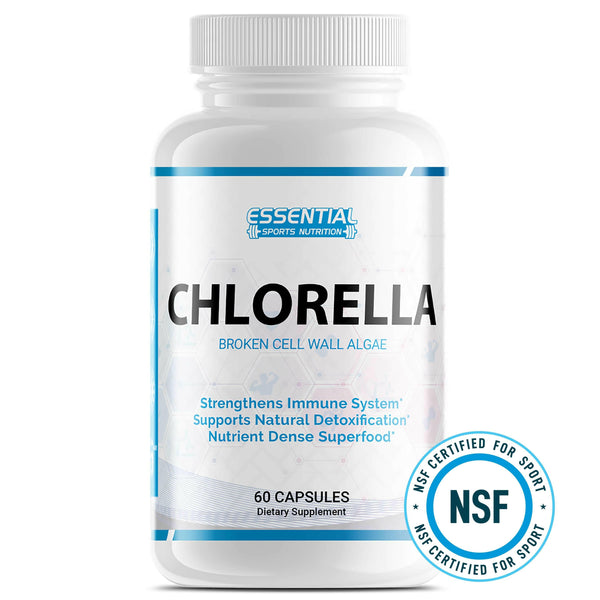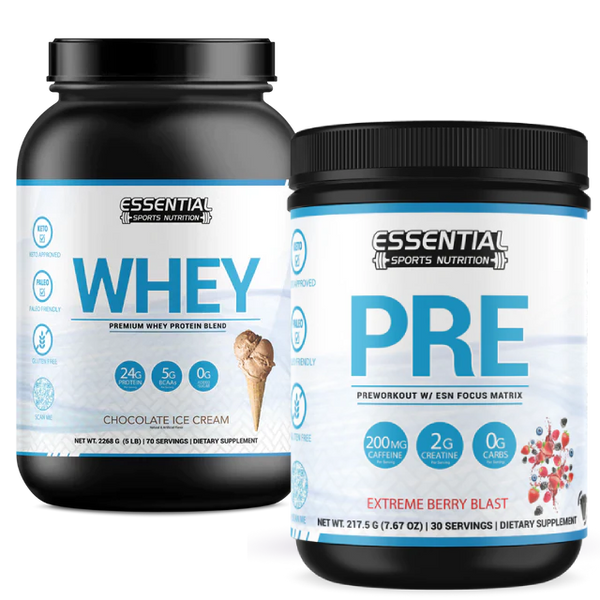Infrared Sauna vs Dry Sauna: Pros, Cons, and Health Benefits of Both
Saunas have long been a go-to for those seeking relaxation, detoxification, and an overall health boost. Perhaps you've heard about the wellness benefits of both infrared saunas and dry saunas, but you're puzzled over which one to choose.
There's an array of glowing testimonials from aficionados on each side, making your decision even trickier.
One important fact to consider is that infrared saunas can heat up much faster than their traditional counterparts. This means less waiting around and more time soaking in the benefits.
Whether you’re looking to ease muscle pain after a workout or simply unwind after a long day, understanding the nuances between these two sauna styles is key to optimizing your experience.
This article will delve into what sets infrared saunas apart from dry saunas and vice versa—from their unique heating methods to their individual health perks. We’ll help clarify which sauna might best suit your lifestyle needs so you can make an informed choice before stepping into the soothing warmth.

Key Takeaways
- Infrared saunas heat your body using light waves, which can go deep into your muscles and joints. They start fast, use less energy, and might be better at getting toxins out of your body.
- Dry saunas warm up the air around you with a heater or stove until it's really hot. This makes you sweat a lot and can help with muscle pain and make you feel relaxed.
- Both infrared and dry saunas have health benefits like easing stress, helping sore muscles, cleaning skin, and making sleep better.
- If you want soft heat that doesn't take much time or power to work, an infrared sauna could be right for you.
- Think about what kind of heat you like more and how each sauna fits into your life before choosing one.
Understanding Infrared Sauna Use

Infrared saunas harness the unique benefits of infrared light to heat your body directly, offering a distinctive approach to relaxation and detoxification that differs fundamentally from traditional methods.
Delve into the science behind these modern wellness havens as we explore how they work and the myriad health advantages they bring to users seeking alternative heat therapy solutions.
How Infrared Saunas Work
Infrared saunas heat your body directly with light waves. These waves, called infrared rays, go into your skin and warm you up from the inside out. This is different from regular saunas that just heat the air around you.
The infrared heat gets deep into your muscles and joints.
This kind of sauna starts to work fast, often in about 30 minutes. It doesn't need to make the whole room hot first. That means it uses less energy and can save on costs. Your body gets warm quickly, helping you feel good without waiting too long or using lots of power.
Benefits of Infrared Saunas
Infrared saunas heat your body in a unique way. They use light waves to warm you from the inside out.
- Penetrates deep: The light waves from infrared saunas go deep into your muscles and tissues.
- Eases pain: These saunas can help reduce aches and pains in your body.
- Lowers stress: Spending time in an infrared sauna can make you feel less stressed.
- Helps sleep: After using an infrared sauna, many people find they sleep better at night.
- Boosts skin health: The heat can help clean out your pores and make your skin look clearer.
- Good for your heart: Using an infrared sauna might lower blood pressure and keep your heart healthy.
- Muscle recovery: Athletes may find their muscles heal faster after exercise with the help of infrared heat.
- Better circulation: The warmth helps blood flow better throughout your body.
- Can aid weight loss: You might lose weight because the body works hard to cool itself, burning calories in the process.
- Comfortable temperatures: These saunas are often more bearable as they don’t get as hot as traditional ones but still provide benefits.
- May reduce inflammation: Some say that this kind of sauna can lower swelling in the body.
- Immune boost: The warmth may also bolster your immune system, which helps fight off illness.
Understanding Traditional Dry Sauna Use

Traditional dry saunas offer a time-honored relaxation technique, employing high heat and low humidity to provide therapeutic benefits. This method of sauna is deeply rooted in various cultures and has been embraced for its ability to elevate the wellness experience through simple yet effective means.
How Dry Saunas Work
Dry saunas heat the space around you with a wood-burning stove or an electric heater. These heaters warm up rocks until they're super hot. When you pour water on these rocks, it creates steam and makes the air even hotter.
This heat makes your body sweat and your heart rate go up, just like when you exercise.
The goal of a dry sauna is to make your body's core temperature rise. That helps get rid of toxins through sweating and can make blood flow better throughout your body. It feels like being wrapped in a warm blanket but much hotter! The room doesn't have any steam unless someone pours water on those heated stones; then it gets steamy for a short while before going back to dry heat.
Benefits of Dry Saunas
Dry saunas are a place where you can relax and feel good. They use hot air to make you sweat and offer many health perks.
- Muscle Relaxation: The heat in a dry sauna helps your muscles loosen up. If you have tight muscles from working out or just from daily life, sitting in a dry sauna can make them feel better.
- Joint Pain Relief: People with joint pain find comfort in the warmth of a dry sauna. The heat reduces the pain in joints, making it easier to move around after a sauna session.
- Well-being Boost: Spending time in a dry sauna can help you feel more calm and less stressed. This kind of relaxation is great for your overall mood and health.
- Improved Circulation: Heat makes your blood vessels get bigger, which helps your blood move better through your body. Good blood flow is important for keeping your heart healthy.
- Skin Benefits: Sweating opens up your pores and can leave your skin looking fresh and clean.
- Detoxification Aid: Your body sweats out toxins while you're in the sauna. Getting rid of these can help keep you healthy.
- Respiratory Ease: Warm air can help clear up stuffy noses and make breathing easier for some people with chest colds or allergies.
- Promotes Better Sleep: After using a dry sauna, many people find they sleep more soundly at night.
Comparison: Infrared Sauna vs Dry Sauna
Delving into the core distinctions between infrared and dry saunas reveals significant differences in how they operate and impact our well-being. This section will provide an insightful analysis that juxtaposes these two popular methods of relaxation and detoxification, addressing their unique attributes and which might best align with your personal health goals.
Difference in Heating Methods
Infrared saunas heat your body directly with infrared waves, kind of like the sun's warmth but without the harmful rays. This means they warm you up deep inside, not just the air around you.
It feels different because it's a gentle heat that doesn't make the air too hot to breathe.
Dry saunas get hot by heating rocks until they're really hot and then sometimes pouring water on them to make steam. The whole room gets very warm, from floor to ceiling. You'll sweat a lot as your body tries to cool down from being in such hot air.
Health Benefits Comparison
One of the key factors in deciding between an infrared sauna and a traditional dry sauna is the specific health benefits each one offers. The following table provides a comparison of the health benefits associated with both types of saunas.
| Health Benefit | Infrared Sauna | Dry Sauna |
|---|---|---|
| Deep Tissue Penetration | Yes (infrared light penetrates deep into tissues) | No (heat affects the body's surface) |
| Detoxification | More effective at lower temperatures | Effective at higher temperatures |
| Relaxation | Induces deep relaxation with gentle heat | Provides relaxation through intense heat |
| Muscle Pain Relief | Direct heat may relieve muscle tension more effectively | High ambient temperatures aid in muscle relaxation |
| Cardiovascular Health | Possible improvement due to deep heating effects | Improvement through increased heart rate and sweating |
| Weight Loss | May aid weight loss by increasing core body temperature | Contributes to weight loss through heavy sweating |
| Skin Health | Potential benefits from increased circulation and toxin removal | Enhanced through sweating and removing impurities |
| Energy Consumption | Lower energy consumption due to direct heating | Higher due to the need to heat the entire room |

Each sauna type has its own distinct way of enhancing well-being, and your choice may hinge on personal preferences for heat intensity, concern for energy use, or specific health goals.
Detoxification: Infrared vs Dry Sauna
Infrared saunas may do a better job at detoxification than dry saunas. They use infrared rays that go deeper into your body. This can help pull out more sweat and toxins from deep inside you.
Dry saunas heat the air around you and make you sweat mostly from the skin's surface. In comparison, the deeper heat of infrared saunas can get more bad stuff out of your body because it goes further in.
Both types make you sweat, but if getting rid of toxins is important to you, an infrared sauna might be the better choice.
Energy Consumption: Infrared vs Dry Sauna
An infrared sauna uses less energy than a traditional dry sauna. The carbon heaters in an infrared sauna send out heat waves that warm your body right away. This means they don't have to work hard to heat up the whole room, saving power.
On the other hand, a dry sauna heats all the air around you and needs more electricity to do it.
Choosing between these saunas also talks about running costs. An infrared home sauna can be cheaper over time because it does not use as much power. Its heaters only turn on when needed and quickly make warmth directly for your body.
A big traditional sauna may cost more each month since it takes more energy to get hot and stay that way.
Advantages of Infrared Saunas Over Dry Saunas
Infrared saunas warm your body directly with electromagnetic radiation. This means they can heat up your body without making the air around you too hot. This direct heating feels nicer and lets you stay inside longer than in a dry sauna.
Also, since infrared saunas don't need to heat the air, they use less energy and save money on electricity bills.
These saunas also go deeper into your skin than dry saunas do. The infrared rays get right into your muscles and joints which may help if you have pains or aches from things like arthritis or fibromyalgia.
Another bonus is that because infrared saunas are dry, there's little risk of mold or germs growing inside them. And for those looking to cleanse their bodies, many believe the deep heat from an infrared sauna helps remove toxins better than traditional ones do.
Disadvantages of Both Sauna Types
Traditional saunas get very hot and might not be good for people with certain health problems. The high heat can be too much for those with heart issues or breathing troubles. Also, because these saunas are so warm, they might cause burns if you're not careful.
They use a lot of electricity or wood, which costs money and may hurt the environment.
Infrared saunas have their own downsides too. Some people might feel bad after using them due to the intense light. If the sauna isn't made well, it could give off harmful fumes from the materials used inside it.
These saunas also may not help everyone in the same way since each person's body reacts differently to infrared radiation.
Both types need you to stay hydrated because they make you sweat a lot, which takes water out of your body. You must always drink plenty of water before going into any sauna to avoid getting dehydrated.
Lastly, staying in a sauna too long can make anyone feel sick – so watch the clock and listen to what your body tells you!
Conclusion: Choosing the Right Sauna for Your Needs

There are pros and cons to infrared saunas and dry saunas. Think about what you like best. Does softer heat sound good? Then infrared might be for you. If hotter air feels right, go with a dry sauna.
Remember that both help your health in different ways. They make you feel better and can heal some body problems. Saunas also help your heart and can calm down bad feelings.
Ask yourself how each one could fit into your life. An easy-to-use sauna at home may be just what you need.
Find the perfect match for your own peace and health.
Types of Saunas FAQs
Q: What is the difference between a traditional sauna and an infrared sauna?
A: The main difference lies in how they heat the body. Traditional saunas use heated rocks or a stove to warm the air, while infrared saunas use infrared lamps to directly heat the body.
Q: Are infrared saunas better than traditional saunas?
A: It depends on your preferences and health goals. Infrared saunas are often preferred for their ability to heat the body directly, offering a more gentle and comfortable experience, while traditional saunas are favored for their authentic steam and heat experience.
Q: What are the health benefits of a traditional sauna?
A: Regular use of a traditional sauna can help improve circulation, promote relaxation, relieve stress, and support muscle recovery.
Q: How do infrared saunas compare to steam rooms?
A: Infrared saunas use infrared light to create heat, while steam rooms produce moist heat through a generator that boils water. Both provide relaxation and potential health benefits, but the experience and benefits vary.
Q: Are there any specific benefits of using an infrared sauna?
A: Infrared saunas are known for promoting detoxification, improving skin health, easing muscle and joint pain, and supporting cardiovascular health.
Q: What are the key health conditions that may benefit from using a sauna regularly?
A: Conditions such as arthritis, muscle tension, high blood pressure, stress, and certain skin conditions may benefit from regular sauna use, but it's important to consult with a healthcare professional first.
Q: How do the health benefits of a dry sauna differ from those of an infrared sauna?
A: Dry saunas provide benefits through the heat and steam, while infrared saunas use infrared light to penetrate the body, offering potential benefits such as deeper tissue penetration and lower ambient temperature.
Q: How do infrared saunas heat and operate compared to traditional saunas?
A: Infrared saunas operate at lower temperatures but can still produce a more intense sweat. The heat from infrared saunas directly targets the body, while traditional saunas heat the air and then the body.
Q: What are the types of infrared used in saunas?
A: There are three types of infrared used in saunas: near-infrared, mid-infrared, and far-infrared. Each type penetrates the body at different levels and may offer unique health benefits.
Q: How long should one typically spend in a sauna session?
A: It's recommended to start with shorter sessions of around 10-15 minutes, gradually building up to 20-30 minutes. It's important to stay hydrated and listen to your body's signals to avoid overheating.
Q: Is a steam room the same as a sauna?
A: No, a steam room and a sauna are not the same. Buth use heated environments for therapeutic purposes, but there are some key differences. Steam rooms have actual steam being pumped into the room and a humid atmosphere instead of a dry one.




























